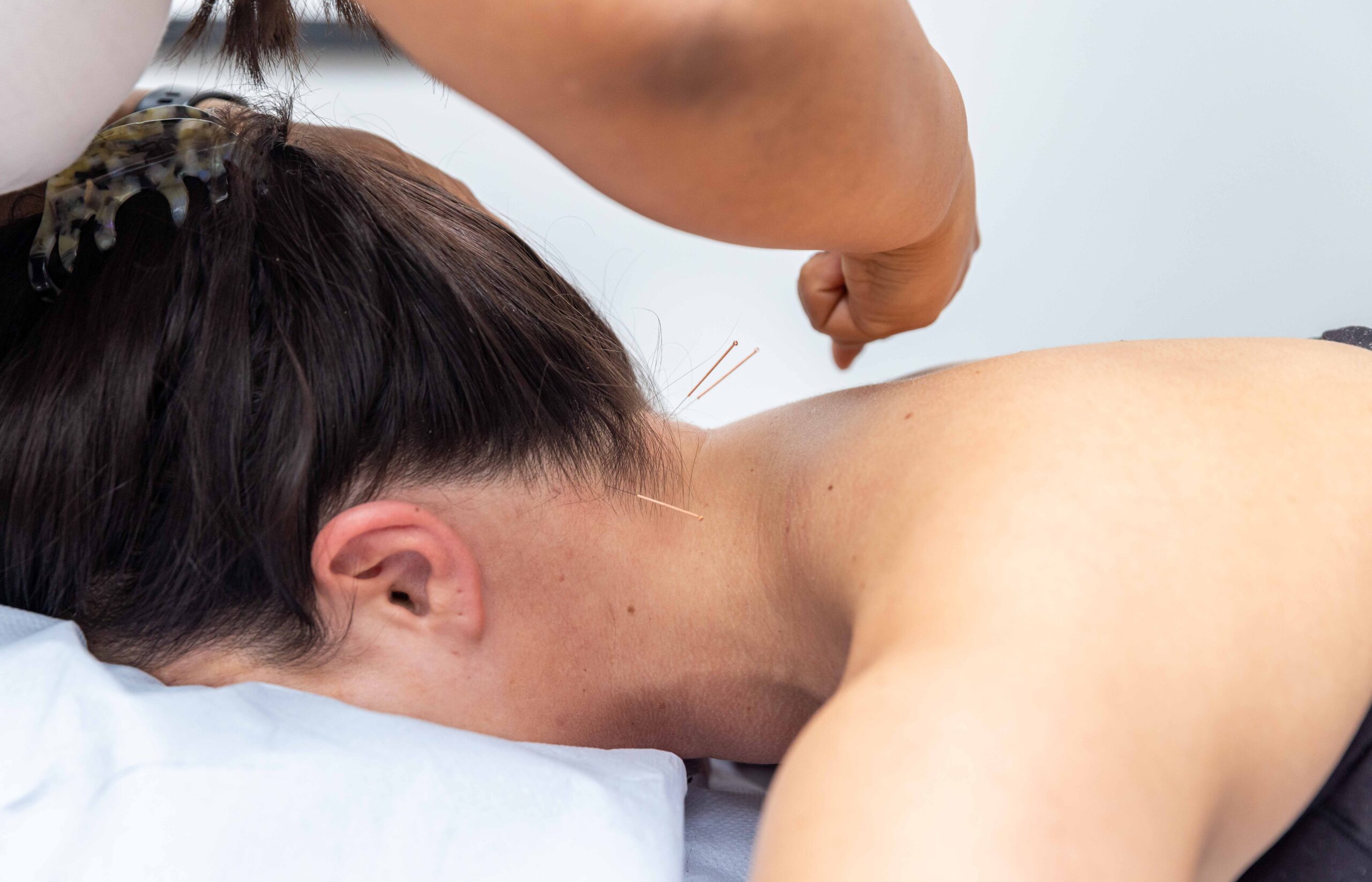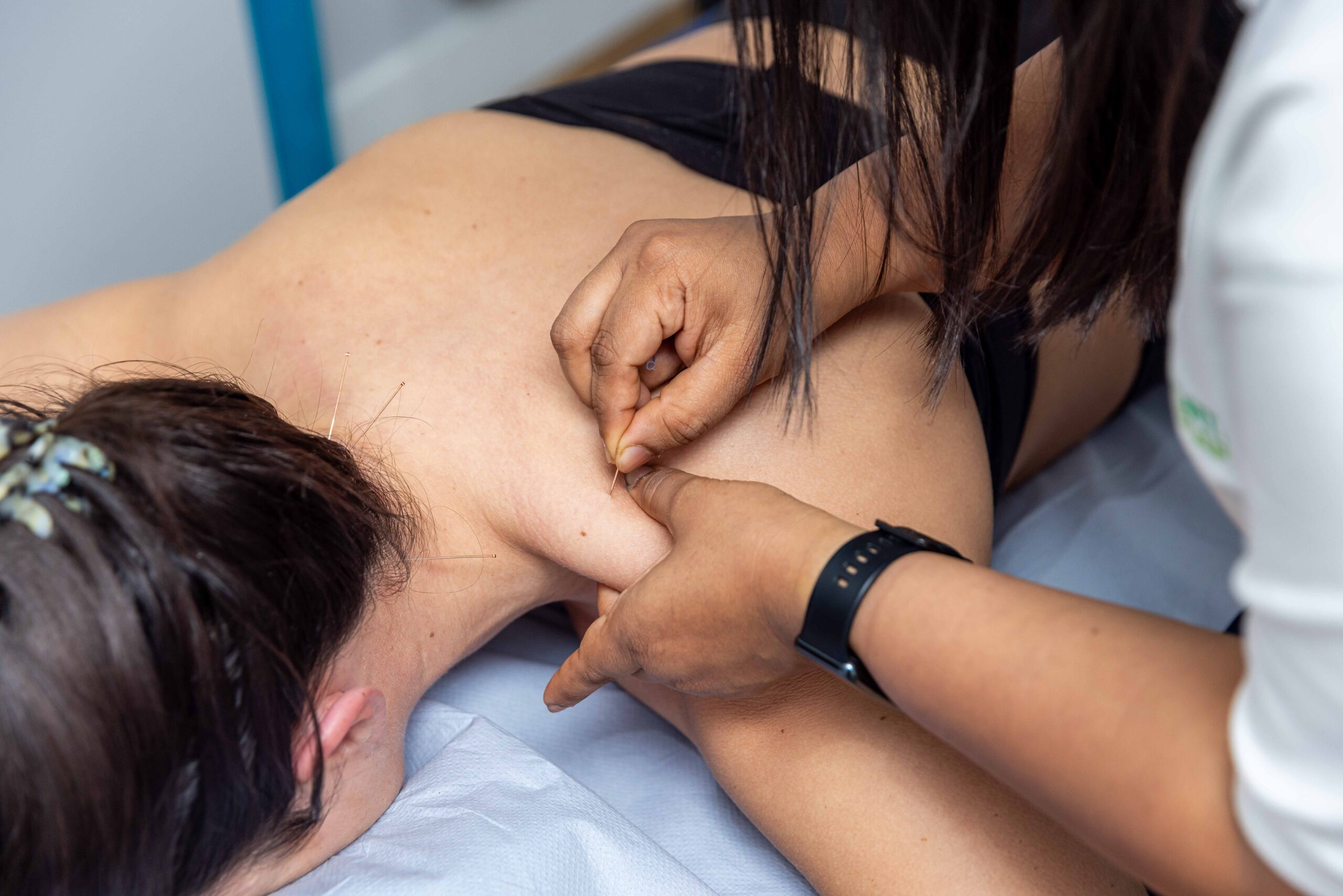
Western Medical Acupuncture is mainly used to treat pain. There are two main effects that are at play when you have this type of acupuncture – we term these local and central effects.
The insertion of the needle has numerous local effects. The insertion of a foreign object into a muscle or tendon will increase blood flow to that area. The blood flow increases the delivery of oxygen and nutrients to that area, and removal of waste from that area. This is aimed at speeding up and aiding injury healing. There is also increased cellular activity in the area where the needle is inserted. These cells could be fibroblasts that produce collagen or macrophages, an immune cell, that clears inflammation and debris.
The insertion of the needle can also mechanically stimulate the muscles into which it has been inserted, this stimulation, often referred to as dry needling, can be quite painful and is believed to mechanically deactivate tension points in the muscles.

MRI studies have demonstrated that acupuncture changes the activity in the brain. One of the areas that is affected is the pain areas. Pain is a multimodal output from the brain, and acupuncture can modulate this output, thus reducing the pain that you experience.
The second main central effect that acupuncture stimulates is the production of brain chemicals. These include endorphins, endomorphins and serotonin. These chemicals make you feel happier, more relaxed and experience less pain.
Acupuncture is very useful for low back pain and sciatica, neck pain, frozen shoulder, tennis elbow and runners knee. It usually takes a number of sessions to see a marked improvement in symptoms.

Dry needling is a form of acupuncture where needles are inserted into trigger points in the muscles. Trigger points are painful taught palpable tension points in muscles commonly described by people as ‘knots’. Needling them causes a muscle fibre contraction after which the muscle relaxes.
The dry needling technique also stimulates blow flow into the area, and stimulates the brain to release endomorphins, your own natural painkillers, thus having an analgesic effect.
Dry needling can be a little uncomfortable – you will feel a scratch as the needle goes through the skin and with the right needle stimulation you will feel a sensation of ache where the needle has been inserted – but it is not extremely painful or as bad as an injection or blood draw. The needle will then be stimulated which can increase the sensation of ache and also cause some minor muscle contractions.
It is not unusual to feel a little tender where the needles were inserted for about 24 hours after the session. This is quite normal and that sensation will pass.
Trustindex verifies that the original source of the review is Google. I had back pain (which I initially thought was hip pain). My pain subsided with the exercises prescribed, and was a massive fan of Nuzhat Shaikh because she responded positively to my curiosity about human anatomy. I feel confident that I can manage my exercise load without aggravating my back, because I understand the signals my body is giving me better!Trustindex verifies that the original source of the review is Google. I had a great experience with my physiotherapy sessions. Shreya was knowledgeable, attentive, and tailored the treatment to my specific needs. I noticed real improvement after just a few sessions. Highly recommend for anyoneTrustindex verifies that the original source of the review is Google. I sought help from Wandsworth Physiotherapy (Khushboo in particular) to treat osteoarthritis in my knee. I was pleasantly surprised by how quickly the treatment took to start working. Khushboo customised her treatment and exercises to my capabilities and abilities. All in all a very positive experience. I would highly recommend WP.Trustindex verifies that the original source of the review is Google. Amazing sports massage! Helped with my ITB issues before a half marathon. The staff were lovely and very knowledgeable - would high recommend!Trustindex verifies that the original source of the review is Google. I am currently seeing Prarthi for slipped disc and sciatica related pain. Every session makes a difference and 3 weeks in and my pain and overall mobility is much better. Highly recommend.Trustindex verifies that the original source of the review is Google. Had the best session with Andreas. He’s understood my back pain issues and has suggested a treatment plan that is already paying off after just one session.Trustindex verifies that the original source of the review is Google. Helped fix my lower back pain last year, highly recommend.Trustindex verifies that the original source of the review is Google. I recently had a physio appointment with Shreya. She was very warm, friendly and professional. She managed to diagnose an issue with my shoulder, which I have had for many years. Following the suggested exercises there has already been a noticeable improvement.Google rating score: 4.9 of 5, based on 396 reviewsVerified by TrustindexTrustindex verified badge is the Universal Symbol of Trust. Only the greatest companies can get the verified badge who has a review score above 4.5, based on customer reviews over the past 12 months. Read more
How can we assist?